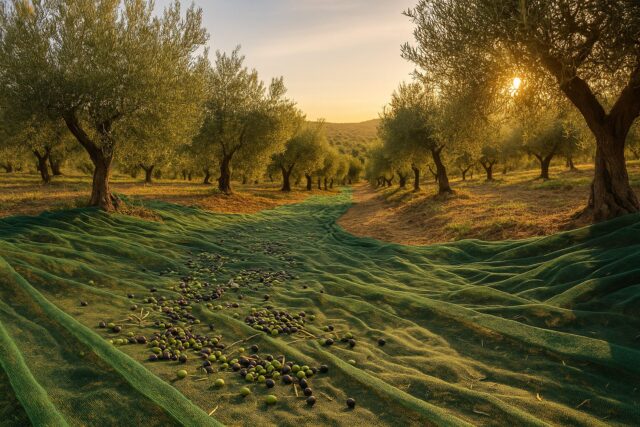
Spain, the world’s top producer, sets the tone for 2025/26. The MAPA’s first forecast puts output at 1,371,938 tons, down 3% year-on-year yet 19% above the six-year average affected by drought. Spring bloom/fruit set was strong, but summer heat capped potential. Figures are preliminary and will be updated during harvest.
Within Spain, Andalusia—nearly four-fifths of national output—projects 1,080,900 t (–5.5% vs 2024/25; +19.8% vs the five-year average). Provincial highlights: Jaén 475,000 t (–15.3%), Córdoba 269,100 t (–7.5%), Seville 130,000 t (+16.5%), Granada 117,200 t (–5.5%), with sharp gains in Málaga (54,600 t, +54.8%) and Cádiz (16,400 t, +95%).
On pricing, trade sources indicate early-harvest new oils changing hands near €6.00/kg, suggesting no abrupt shift so far despite the forecasts.
Globally, early signals point to ~2.65 million tons across leading producers, pending national updates. In this setting, Spain’s final volume (~1.37 Mt) and oil yields—weather-dependent in autumn—will heavily influence world balance.
SOURCES:
España superará los 1,37 M de toneladas de aceite de oliva
Las previsiones de cosecha no alteran el mercado del aceite de oliva
Aforo: Andalucía prevé que su producción de aceite de oliva se sitúe en 1.080.900 t. en la campaña 2025/26, un 5,5% menos
Se prevé que la producción de aceite de oliva en los principales países caiga a 2.65 millones de toneladas
Primera estimación del MAPA: la producción de aceite de oliva en España se situará en 1.371.938 toneladas en la campaña 2025/26
Balance récolte 2024-2025, les derniers chiffres

